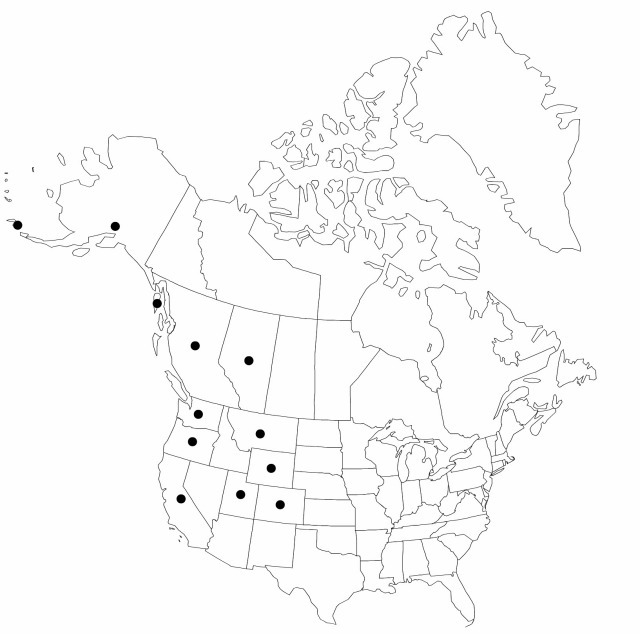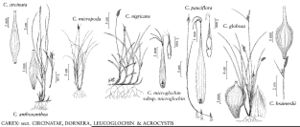Carex nigricans
Mém. Acad. Imp. Sci. St.-Pétersbourg Divers Savans 1: 211, plate 7. 1831.
Revision as of 19:11, 24 September 2019 by FNA>Volume Importer
Plants loosely cespitose, mat-forming; rhizomes short, stout. Culms 5–30 cm. Leaves flat to the tip, (1.5–)2–4 mm wide. Pistillate scales reddish brown to black, lanceolate, as broad and as long as or slightly longer than perigynia, margins not hyaline or scarious, apex acute to acuminate. Perigynia ascending to spreading and deflexed at maturity, 3.8–4.1(–5) × 1–1.2 mm; beak dark brown to black, frequently as long as body of perigynium. Stigmas 3. 2n = 72.
Phenology: Fruiting Jul–Aug.
Habitat: Moist meadows, mossy heaths, wet gravels of streams and snowbeds
Elevation: 90–3400 m
Distribution

Alta., B.C., Alaska, Calif., Colo., Mont., Oreg., Utah, Wash., Wyo.
Discussion
The occurrence of Carex nigricans in Russia, although expected, is unconfirmed by specimens, according to T. V. Egorova (1999).
Selected References
None.
Lower Taxa
None.
